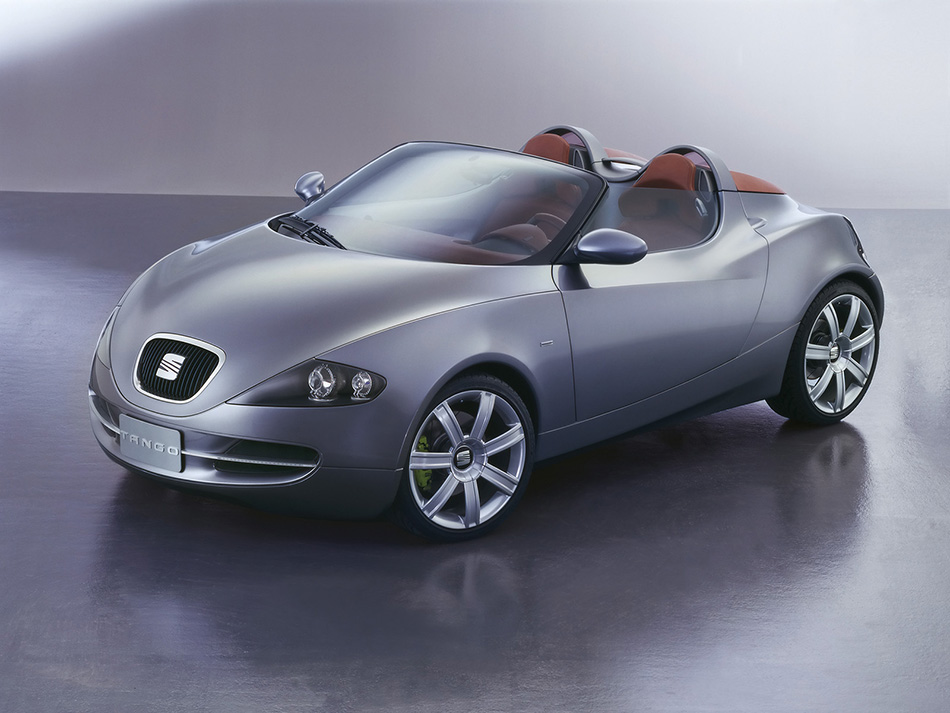Daring, full of vital energy and sporting intensity, the SEAT Tango conveys emotions beyond the impact of technological advances.
With this two-SEATer, to be unveiled at the Frankfurt International Motor Show, the SEAT Technical Centre has evoked the spirit of sporty 50s and 60s convertibles through the use of pure, no compromise, design. The result is a thriller whether it's being driven gently or its incredible potential is being fully exploited.
Tango has been conceived as a genuine spider - open, minimalist, essential in every detail. It features expressive and innovative solutions based on a structure in which the chassis, body, passenger compartment, engine and structural elements merge to form a whole.

Primary materials and textures blend together, creating a smooth, continuous flow of elements with the aesthetics of the cockpit, for example, exploding onto the outside of the car and back again to the inside. Like a metal skeleton, unpolished aluminium tubes are visible throughout the interior of the cockpit which also plays host to parts of the chassis, while the waterproof leather upholstery also lines the storage compartments behind the SEATs of this enticing roadster.
Novel lighting solutions are a strong feature of the concept. The SEAT Tango features streamlined headlamps devoid of internal structures, leaving their architecture visible. Both Xenon dipped headlights and sidelights automatically follow the direction of the front wheels
The foglamps are made up of a series of light emitting diodes encased in the central moulding of the grille, while the rear lights use filters lit by fibre optics to create multiple combinations (the entire light strip can be a rear light, a brake light or an indicator).
They are also of variable intensity, automatically adjusting their brightness to the prevailing conditions. This small galaxy of lights is perfectly integrated in the smooth lines of the body, whose only "cosmetic" addition is a small aerodynamic spoiler at the lower rear end.
Sophistication lies beneath. A complex tubular structure (called a Safety Skeleton) intertwines under the muscular shape and is a direct descendent of the World Rally Car safety cage. It houses not only the front MacPherson struts and the rear suspension system which features a degree of self steer, but also the engine, which transmits 180 hp to the front wheels.
At the rear, buttress-like framework is joined to the structure of the SEATs themselves, distributing tension in several directions. This means the driver's SEAT is fixed, so to ensure the perfect driving position the pedal box is adjustable, while both the steering wheel and its integral instrument dials are adjustable for height and reach.
Tango demonstrates perfectly the creative and innovative capabilities of SEAT's Technical Centre. The SEAT Tango makes its dйbut at the Frankfurt International Motor Show, which is open to the public from 13 to 23 September.
Source: Seat






















